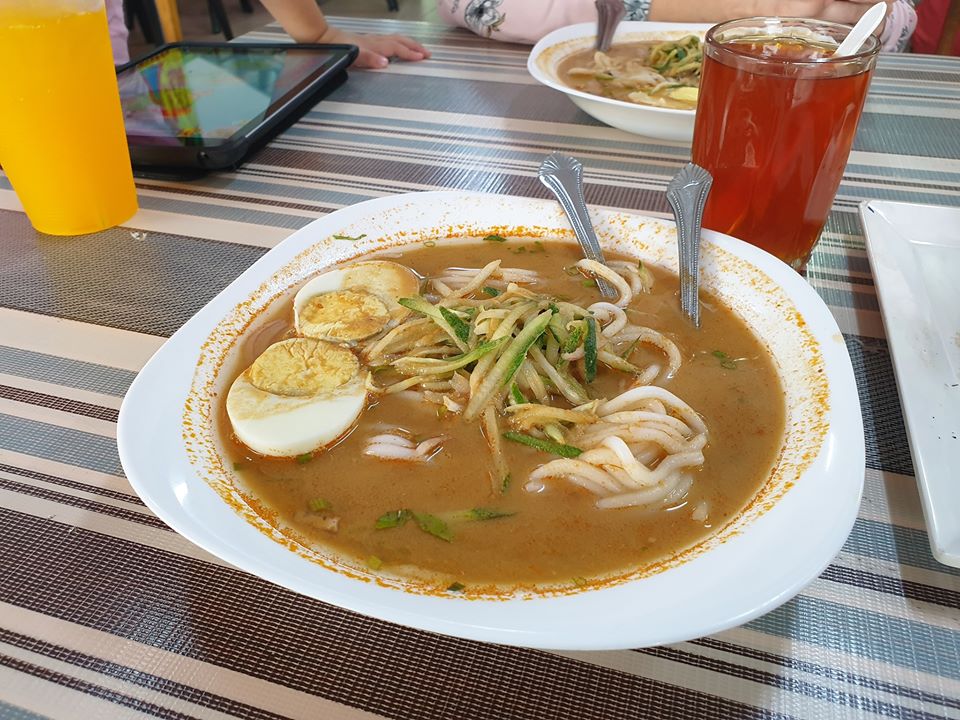KANGAR: Ask anyone in Perlis where to get the best laksa and the answer will most probably be a restaurant named Kak Su Laksa in Kuala Perlis.
Operated by Abdullah Osman, 60, its laksa has even been given top marks by reviewers in Trip Advisor, a popular travel platform that reviews accommodations, restaurants and other travel experiences across the world.
Located at Jalan Siakap Satu, the restaurant was opened in 2009 by Abdullah and his adoptive sister Su Nor, 69, who have been making and selling the laksa for almost 46 years.
Currently, only Abdullah is involved in running the eatery and, in order to preserve the authenticity and unique taste of its laksa, he faithfully adheres to the closely-guarded family recipe that has been passed down from generation to generation.
Laksa, a popular Malaysian dish, is a spicy noodle soup but the Kak Su Laksa version is a little different as the broth is not spicy but creamy and somewhat sweetish as it is infused with Ikan Kembong or sardine in generous quantities.
SPECIAL INGREDIENT
To ensure that the taste of the Malaysian delicacy is not compromised and laksa lovers keep coming back for more, the preparation of the noodles and gravy for the dish is closely supervised by Abdullah at his restaurant kitchen where he can be seen hard at work all day.
“I help to make about 60 kilogrammes of laksa on a normal weekday but during weekends and school holidays, the amount can go up to hundreds of kilos. People don’t only come here (restaurant) to eat but also pack kilos of laksa to take home,“ he told Bernama.
Abdullah, or Pak Ude as he is known as among the locals, said during the peak seasons, his restaurant uses up to 200 kg of fish, which he buys from the fishermen in Kuala Perlis, daily to meet the demand for his laksa.
Abdullah makes his noodles from scratch, using rice flour, tapioca flour, and stoneground uncooked rice which, perhaps, is the “secret” ingredient that enhances the taste of his laksa.
“Few laksa makers use ground rice because the preparation process is cumbersome. The (uncooked) rice has to be soaked in water first and then it is ground and left to dry ... this process can be time-consuming,“ he said.
He said most laksa makers opt to take the easy way out by using only processed rice flour to make the noodles “but the taste is not the same”.
To make the noodles, Abdullah uses his hands to knead the ground rice to which some rice flour and tapioca flour are added. The raw dough is shaped into balls and boiled for two to three minutes.
To make the noodle strands, the balls of dough are inserted into a special machine which squeezes out the dough in the desired shape. The noodles are then boiled in a cauldron after which they are ready for consumption.
NEIGHBOURHOOD DELICACY
Kak Su Laksa also serves pulut udang (glutinous rice with a spicy shredded coconut and dried prawn filling), spera (a type of puff with spicy or sweet coconut filling) and keropok lekor (fish crackers).
“Some of us here add the pulut udang to the laksa and the result is really delicious,“ said Abdullah.
He said during the 70s, he and his siblings used to sell laksa prepared by their mother in the neighbourhood of Kampung Seberang Ramai, Kuala Perlis, where they lived.
“We would carry the laksa in a wicker basket laced with banana leaves and whoever wanted to buy it would have to bring their own container,“ he recalled.
Abdullah, who is single, said he is happy that some of his nephews and nieces are also involved in the family business and have learnt to make the special laksa.
“We want our family legacy to continue to be preserved,“ he added. — Bernama









